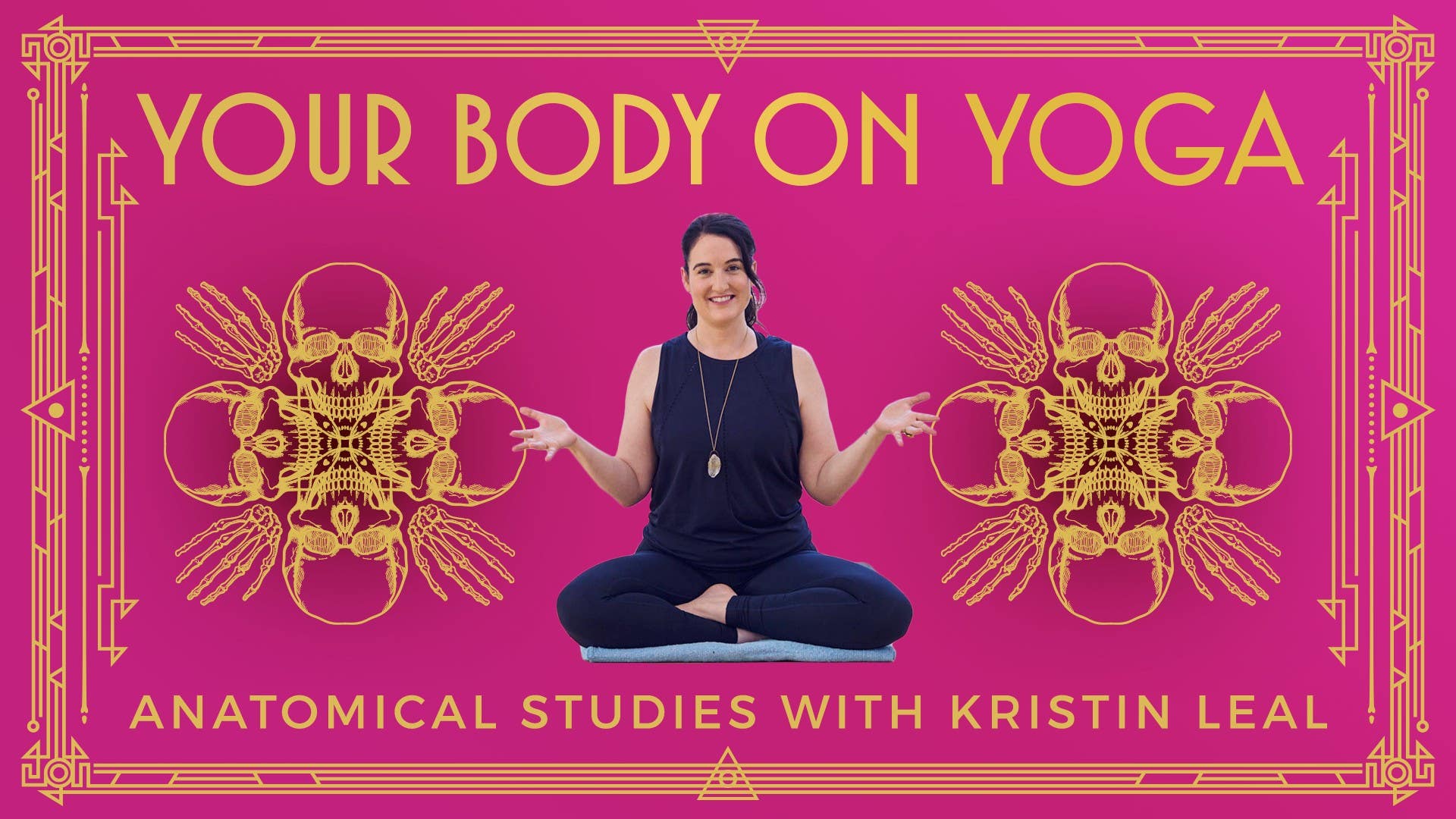Description
See attached .pdf for Synovial Joint Anatomy chart.
About This Video
Transcript
Read Full Transcript
You have many different types of joints in your body. You have joints where your teeth meet your gums. You have a type of joint in between your skull plates. But I'm rarely going to tell a student move your left incisor immediately or draw your skull plates this way or that way, right? So we're going to stick with what's called our freely movable or diarthrotic synovial joints. Now synovial joints will have a lot of similarities independent of where they show up in our body. And these are really the joints that we're going to be moving or for teachers instructing our students to move. And so it's worth a deeper dive into the components that make up a synovial joint. So this is the part of the video where you learn I can't draw, but I'm going to do my best. So first things first, we have to have two articulating bones, right? So the only bones that I can kind of draw, forgive me, are the joints of the knee. So we have our femur bones articulating with our tibia or lower leg bone. Now this is what's called a true joint. The true articulation between the femur and the tibia. Now sometimes you'll have kind of accessory bones. This is the necklace and earrings of the operation. They add some flavor. And the accessory bone in this situation is that's called the fibula, the smaller of the lower leg bones. And we also have a patella, a kneecap. Now for the sake of this drawing, I'm just going to put the kneecap here. It's not there. Something has gone terribly wrong if it's there. The patella actually exists around here. But just so we can look inside, I'm going to toss it to the side for a sec. So we have our femur and tibia, the true articulation of the knee joint, and the accessory bones, the fibula. I kind of remember that as like Sib is a small lie, fibula is the smaller of the lower leg bones, and our patella or kneecap. Now where we have two articulating bones, we're also going to have something that encapsulates those two articulating bones. And it's called a joint capsule. Now on a two-dimensional, loses some of its interest here, but can you imagine that it's encapsulating, surrounding the ends of the two articulating bones. This joint capsule is a fibrous tissue that surrounds the ends of the two articulating bones, and it's got a membrane on the inside, and that membrane produces a fluid upon action. So when you provide action in a joint, it's like milked, so to speak, and it produces this fluid, and that fluid's called synovial fluid. Now good thing, because everything inside the joint, everything that I'm going to draw, except for these bones, does not have direct blood supply. It's what's called avascular. So where you have blood supply, you have the opportunity for nutrients to come in, waste products to move out. You have the potential of healing, of all of these great things that blood will bring us, that nourishes us. You don't have it on the inside of a joint, so we need a transport, and the synovial fluid acts as the transport between what's outside and what's inside. And it also will provide some nutrition for the joint, and it provides a little bit of lubrication, so it cools the action between these two bones, it begins to reduce the heat and the friction between those two bones upon movement. Synovial fluid also gives us this cool interest of, when you hear yourself crack, cracking your knuckles, this is what's thought to be gas bubbles inside of the joint. Where you have fluid, think of like a water bottle, where you have fluid in an encased bottle, an encased capsule, and you shake it up, you provide movement, you create bubbles. Now some people are gassier than others, and some people's joints make a little bit more noise than other people's. We also hear that noise when the two bones, because they're encapsulated with liquid in the middle, move away from one another, you might hear a popping sound, and this is kind of the vacuum that's created between those two bones. Often we hear it when we're doing a triangle pose, you hear kind of all these kind of snap crackle pops in the room around you when everyone comes into triangle, because it's moving the two ends of the bones away from one another. Now you sometimes have heard of, maybe your grandmother told you, don't crack your knuckles, you're gonna get arthritis, you might have heard that. Short answer is grandma's wrong. Longer, more complete answer is she's kind of right. So what she means, I think, is not when, like if we're reaching for a pen and our knuckles crack, no big deal, gas in the joint, just movement, fluid, it's the nature of it. But that's not what you see, usually when people crack, they go, they usually go through this whole system head to toe of hyper manipulation, aggressive movement, they do it kind of habitually, they do it all the time, every time they wake up, every time they stand up, they go through this head to toe crack. This can be aggressive, and this can cause some destruction to the joint, which I'm going to show you soon.
All right, so we have now a joint capsule, where we have two bones, we're gonna have to have a stabilizer that connects the bones to bones, and this is called ligaments. Now in your knee, you have four, you have what's called the collateral ligaments, these are on the sides, now ligaments are cool tissues, ligaments are, their job is to kind of stabilize, right, to prevent weird translation between the two bones at the joint, right, it doesn't, our knee is what's called a hinge joint, so it bends and straightens or flexes and extends, and it's not made to do all of this kind of wild rolling action or circular action, and so we have ligaments that their job in life is to just kind of hold on to prevent this weird translation. So we have our collateral ligaments, we have one that's on the outside or lateral portion, and that's called our lateral collateral ligaments, you know this is the lateral side because the fibula is always on the lateral side of your lower leg, so this is the lateral collateral ligament, and then this one's what's called the medial collateral ligament or LCL and MCL. Now you also, doesn't benefit you to have your femur fly forward or fly back without end, so we have ligaments that what's called crisscross or the cruciate ligaments. Cruciate means, comes from a root meaning cross like crucible or crucifix, and these crisscross between front and back, and they're named for where they start on the tibia, so one starts on the anterior of the tibia, crisscrosses to the posterior aspect of the femur, and that's called the ACL or anterior cruciate ligament, and then one starts on the posterior side of the tibia, the backside crisscrosses and attaches to the anterior part of the femur, and that's called the posterior cruciate ligament. You might have even heard of these ones, sometimes you'll hear of like a football player blue is ACL out or maybe you, blue one of these ligaments out, because really their job is just to hold the line, just to hold everything in its true relationship and just keep things stable, right? They're the stear of the operation. Now they don't have direct blood supply, and they're not like elastic bands, they have a slight amount of give to them, anything in nature, right, that's strong, anything that we build architecturally, like a big skyscraper or a bridge, right, will have this incredible strength, but a modicum of give, and that actually emphasizes the strength, it makes it even stronger that it has a little bit of resiliency. So these ligaments have that resiliency, but they're not made to stretch, right? So they're kind of almost like used chewing gum. When you stretch them, it doesn't snap back to its original shape, it just kind of creates this kind of loosey-goosey, I call it, ligament. On the inside, going a little bit deeper, we have different types of cartilage. So depending on the joint we're talking about, they'll have some different names to them. In this situation in the knee, we actually have two different types of cartilage. We have what's called articular cartilage, and this is, I almost think of it like nail polish. If you eat meat, you might have even seen it at the ends of a bone. So I think of it like nail polish, and just like nail polish, it's painted on the ends of the two articulating bones, and just like nail polish, if it gets chipped, it doesn't just reapply on its own, right? And so we have this smooth, shiny, glistening kind of cartilage that has a tiny bit of vascularity, because it's kind of painted on the ends of the bones, which are highly vascular. And it provides kind of a last line of defense between those two bones. It provides a little bit more slip inside, a little bit more heat reduction. This is kind of a protective cartilage shell over the ends of your bones. Now, we also can find a different type of cartilage. We have what's called the meniscus or fibro cartilage. Now in your knee, you have two little croissants, two little puffy little pillows, called the medial meniscus and the lateral meniscus. Now, these are actually croissant shaped, kind of half moon shaped, and kind of like croissants, they can get flaky when we're kind of rubbing against them. And they provide some shock absorption. And they also deepen the congruency between those two bones. So think of like your head in a pillow at the end of the night. You get all kind of snuggled in, and there's more surface area of your face touching more surface area of the pillow. This is what these little pillow-like meniscus do. Deep in the congruency, deep in the snugly fit, provide a little shock absorption. And a little space holder, they are the sukkah of this operation. They provide space between those two bones at the joint. Now, in your body, when we're doing yoga poses, and unfortunately, especially in this joint, sometimes we ask a joint to do something it's not good at. We'll ask our knee joint, which I told you is a flexion and extension beast, right? That's what it does. We ask it unfortunately, maybe to rotate, and a lot of our pastures were kind of unwittingly asking for rotation there. What can sometimes happen is we're making these ligaments loosey-goosey. We won't get the signal because all these tissues, except for the bones, don't have the nerves that transmit pain or danger. If you've ever broken a bone, you definitely know there's nerves in there that are going to transmit pain and danger to you. These other tissues don't have it, so you might be doing it and not having pain, right? Just because it doesn't hurt doesn't mean that it's good for you. Now that we have kind of loosey-goosey ligaments, and the femur can translate in all different kinds of ways over these cartilage critters, the cartilage can get kind of messed up. The little flaky croissants can flake up, and even the articular cartilage can start to get chipped. Now when you have bone on bone, bone has an incredible amount of pain fibers, bone has a lot of vascularity, and bone doesn't know any different. When it's stressed upon, just like in the healthy stress we talked about earlier, when it's stressed upon, it starts to grow more bone. So more bone kind of runs to the area, and now you have what's called these osteophytes, or these kind of cutely-coined joint mice that can break off and kind of run around in the joint. Now this is death and destruction to your joint. This is the beginnings of what's called arthritis, osteoarthritis, and this is something that we don't bounce back from. We can reduce the inflammation, but the damage, these tissues don't spring back to their kind of spring chicken shape. So it benefits us if we can learn what's on the resume of each joint and ask it to do what it's good at instead of asking for what it doesn't want to do.
Your Body on Yoga: Introduction to Anatomy
Comments
You need to be a subscriber to post a comment.
Please Log In or Create an Account to start your free trial.


















